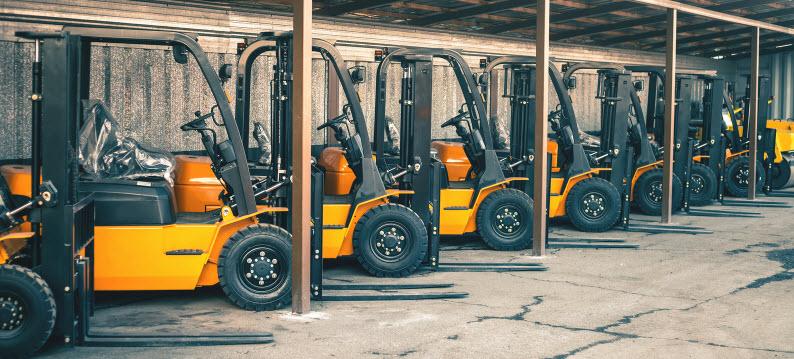 On every working day in the UK, five people are seriously injured in accidents involving lift trucks. The repercussions of sad events like these change the lives of those involved, as well as their families, friends and colleagues. The commercial impact of an accident can leave a stable and successful operation fighting a public relations crisis and the threat of a significant fine. The hardest question will be - could this have been avoided. Unfortunately the answer is often yes.
On every working day in the UK, five people are seriously injured in accidents involving lift trucks. The repercussions of sad events like these change the lives of those involved, as well as their families, friends and colleagues. The commercial impact of an accident can leave a stable and successful operation fighting a public relations crisis and the threat of a significant fine. The hardest question will be - could this have been avoided. Unfortunately the answer is often yes.
Safety is a collective responsibility, leadership must come from managers and supervisors who should be aware of what’s expected of themselves, as well as colleagues, to minimise the risk of accidents. When it comes to fork lift safety, the HSE makes it very clear that ultimate responsibility sits squarely on management’s shoulders. Whilst not exhaustive, the FLTA have compiled a list of dos and don’ts for managers in companies using forklifts and other MHE.
Managers and supervisors should:
- Be adequately trained to recognise safe and unsafe practice
- Know how to carry out effective observations regularly and read L117 (Rider-operated lift trucks: Operator training and safe use)
- Recognise the characteristics of lift trucks and associated hazards
- Be vigilant with operators – reinforce to operators that trucks must only be used for their intended purpose and within their load capacity
- Continuously monitor operators – giving praise and feedback as necessary, organise training to fill any gaps in knowledge and ensure pre-use checks are being properly completed and recorded
- Inform anyone who may come into contact with fork lift trucks of associated dangers before first contact (ideally at induction)
- Segregate workers and visitors on foot from lift truck operations, ensuring pedestrians adhere to segregation procedures
- Encourage staff to speak up when they see bad practice occur and make sure all operators and pedestrians follow company procedures
- Review operations continuously to identify improvements and communicate effectively with operators, pedestrians and line managers
- Maintain and promote health and safety standards
- Complete and record management checks on a regular basis
- Plan safety initiatives to avoid complacency
Managers and supervisors should not:
- Allow anyone to operate a machine unless they are qualified and authorised to do so
- Never allow operators to carry passengers or lift passengers and
- Allow unsafe acts or practice to go unnoticed
Helping management ensure pre-use safety checks are being carried out is a challenge SG World can help with. Many companies use a generic printed checklist, which is a good start but it does have some disadvantages. For example, once you complete an A4 checklist, where does it go next? It needs to stay in situ with the vehicle so people can see it’s status but you also need a central record. What if it’s lost, damaged or not returned? Do you want to take the chance you don’t have a full, up-to-date pre-use inspection safety record if there’s an accident?
SG World’s pre-inspection checklist design means the operator fills in the information once and a duplicate copy is automatically created. That’s one copy to stay with the equipment and one which stays in the book for your central records. The unique chequebook format also incorporates a distinct green and red pass/fail notice which displays in a hi-vis yellow, plastic wallet so you can see at a glance whether the equipment is safe to use.